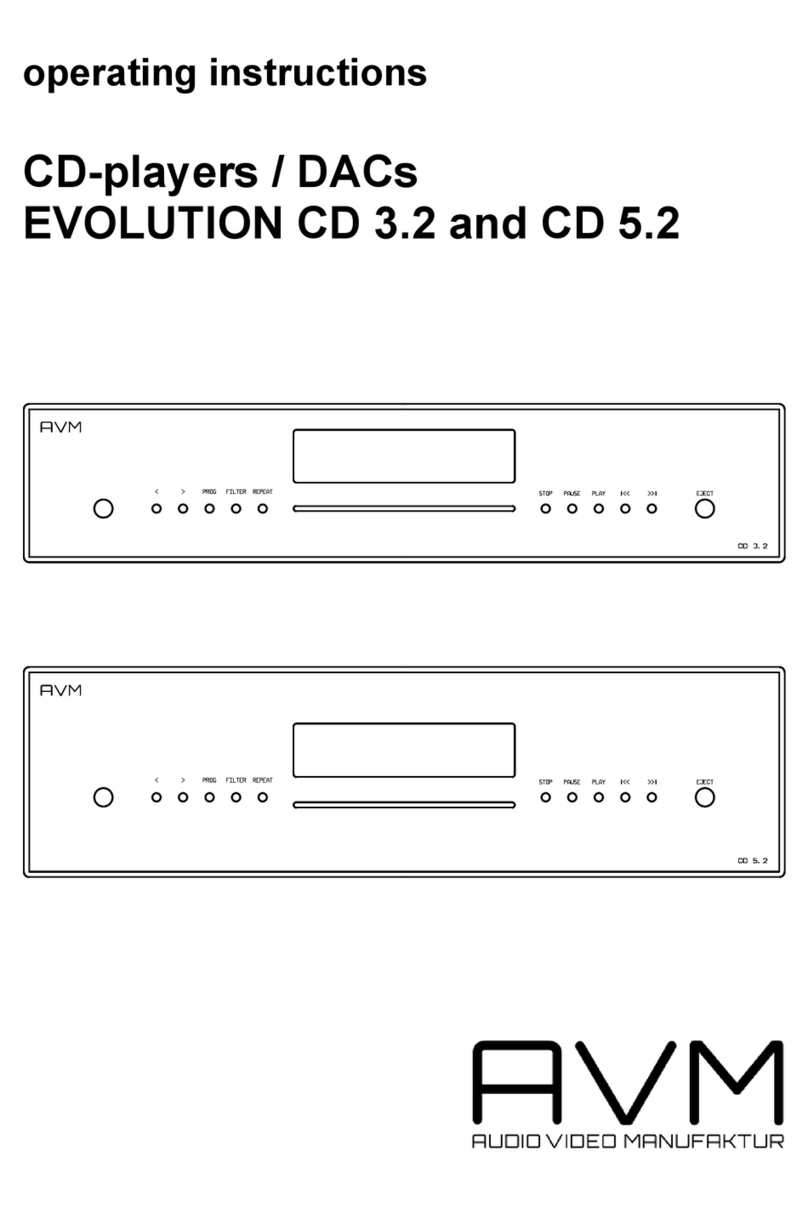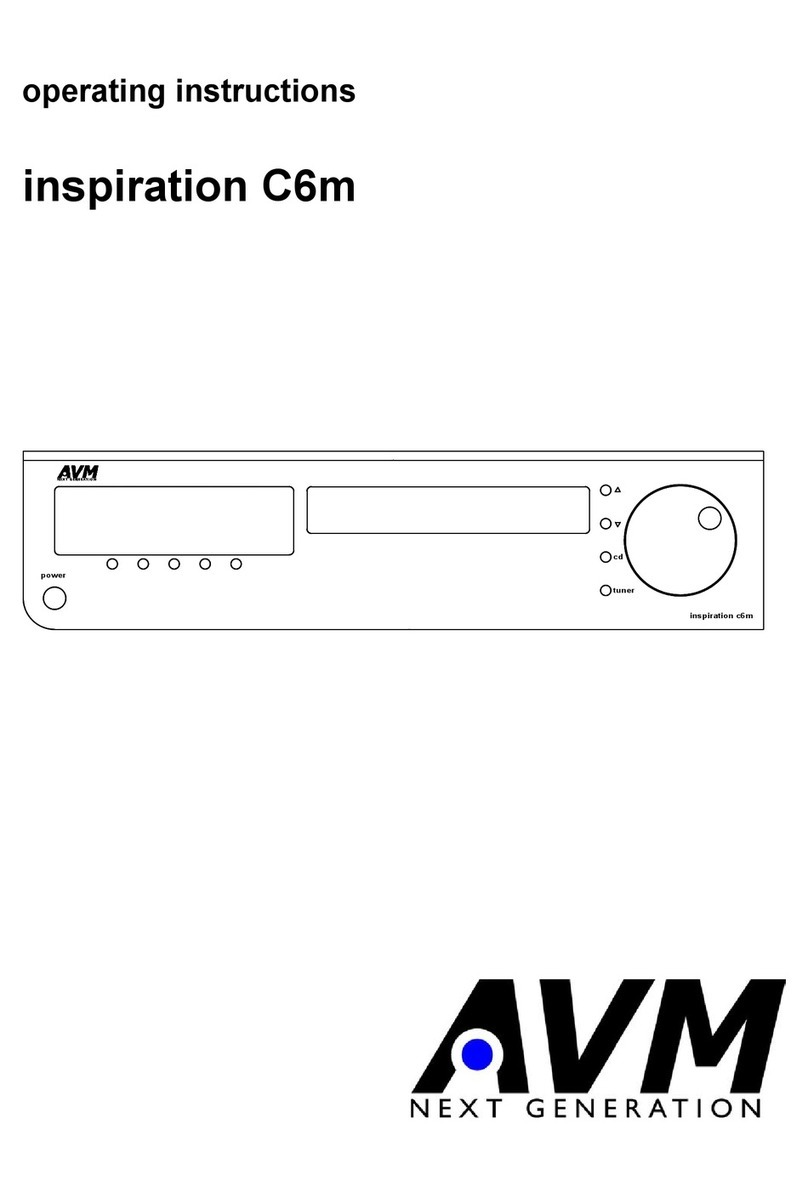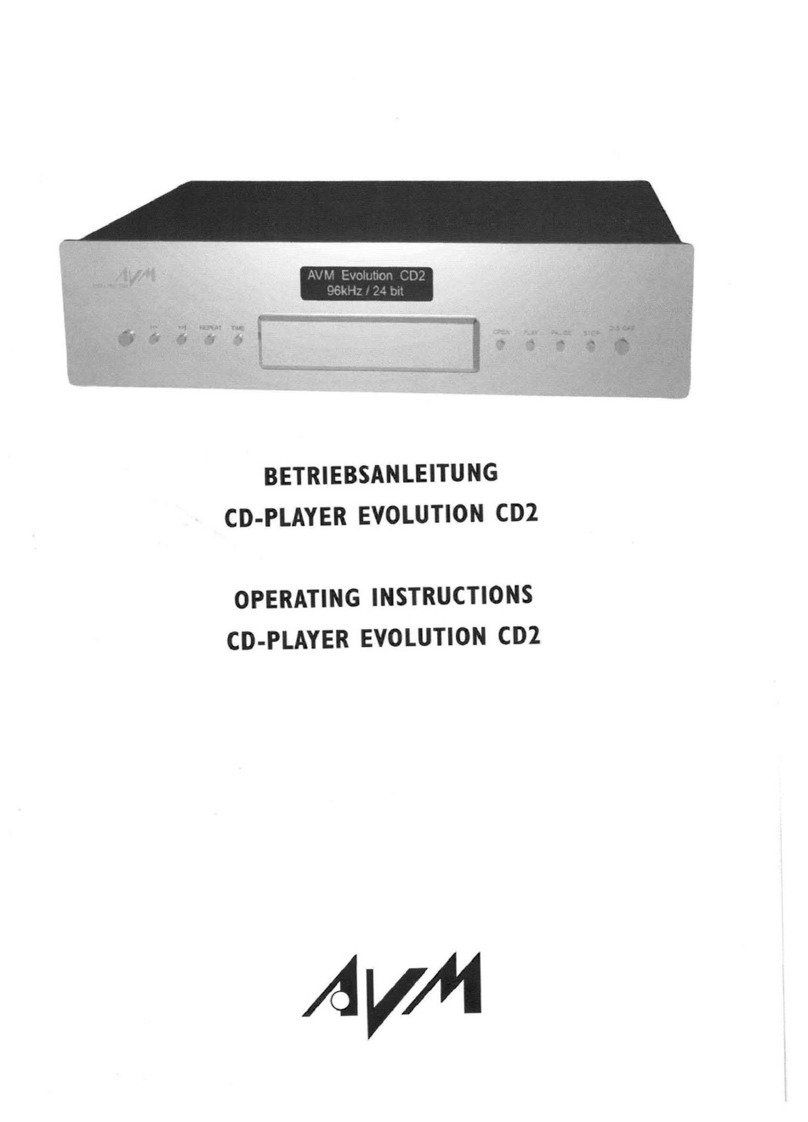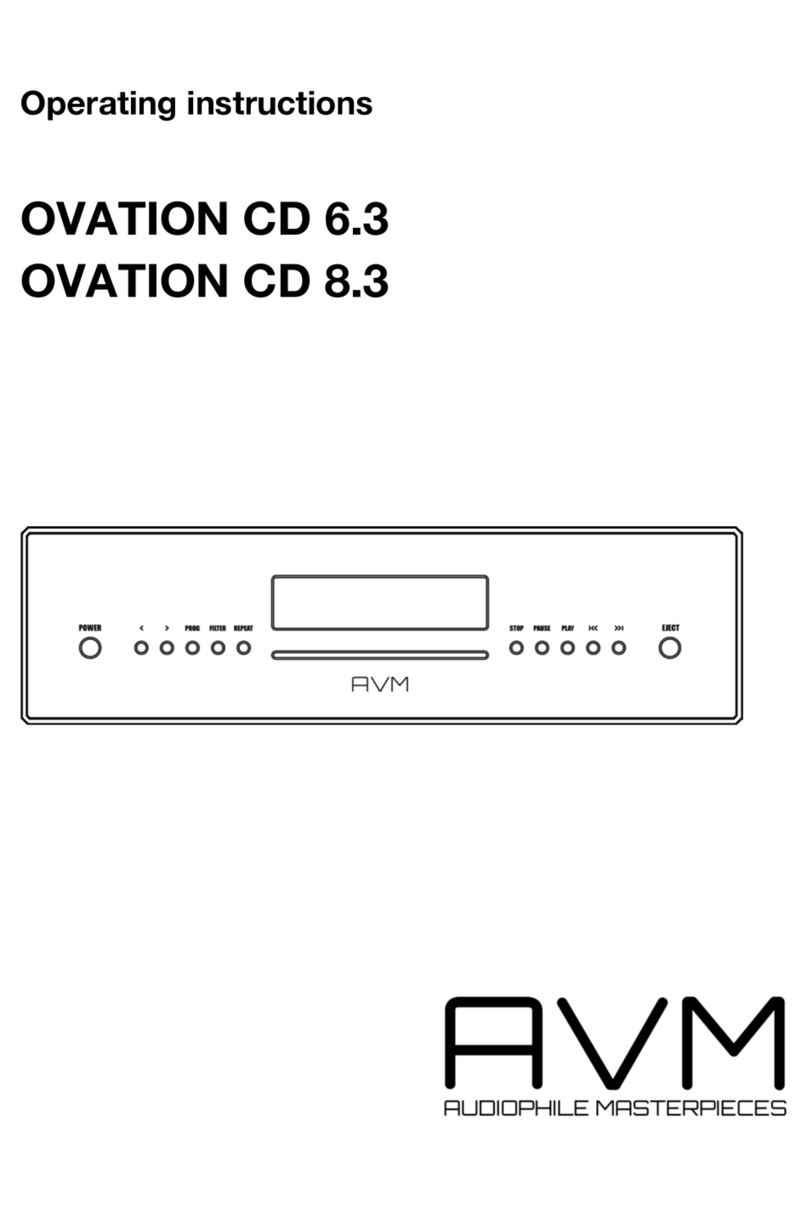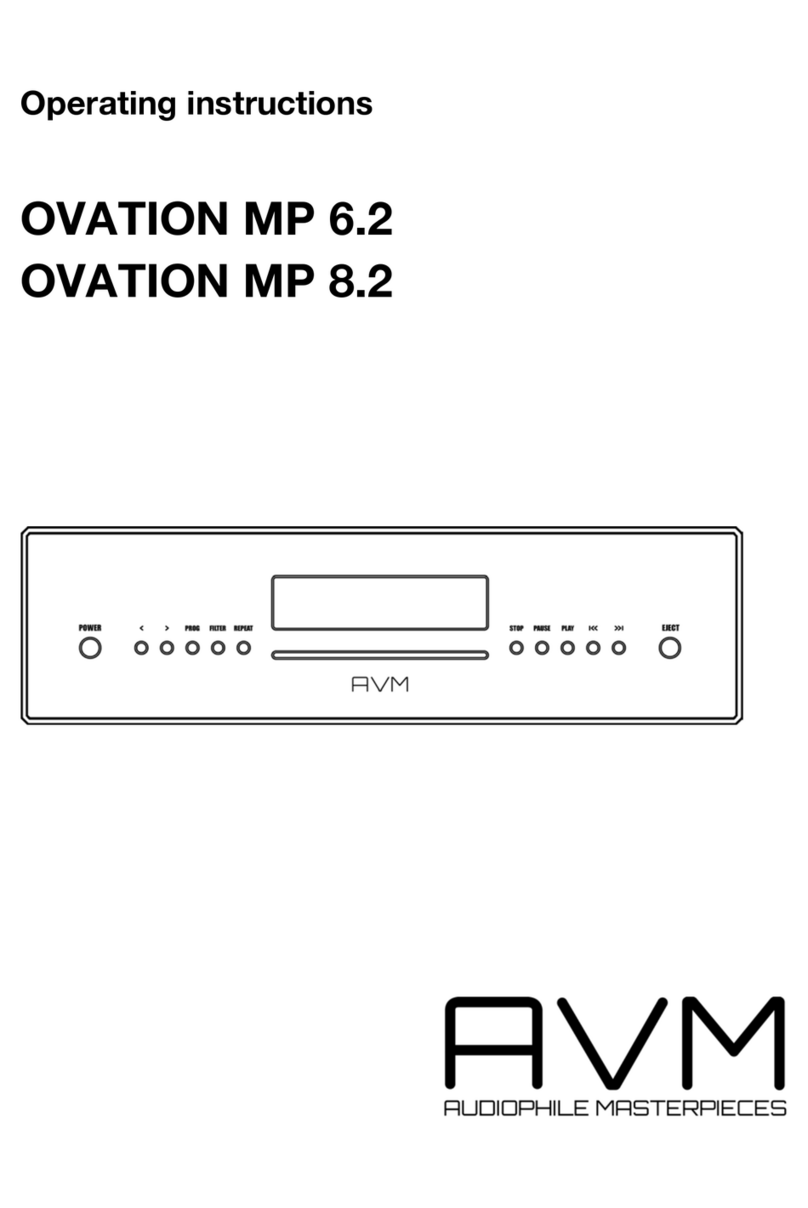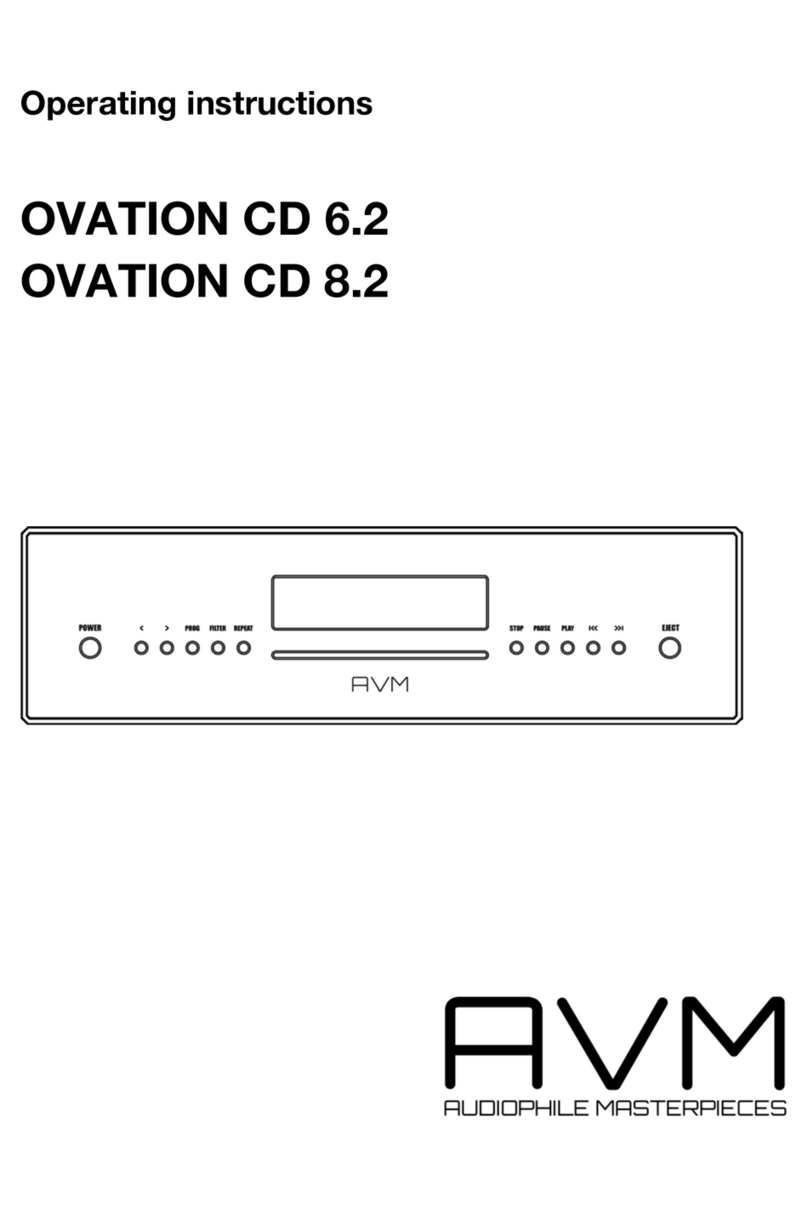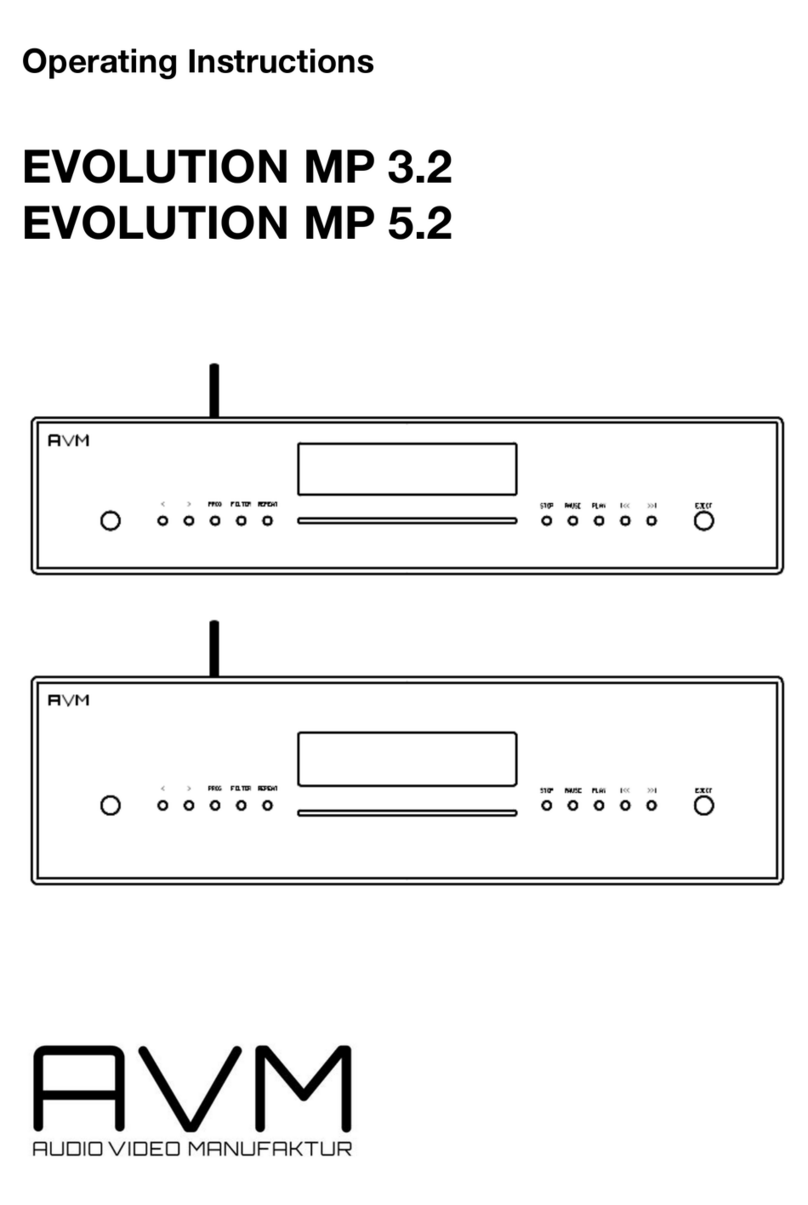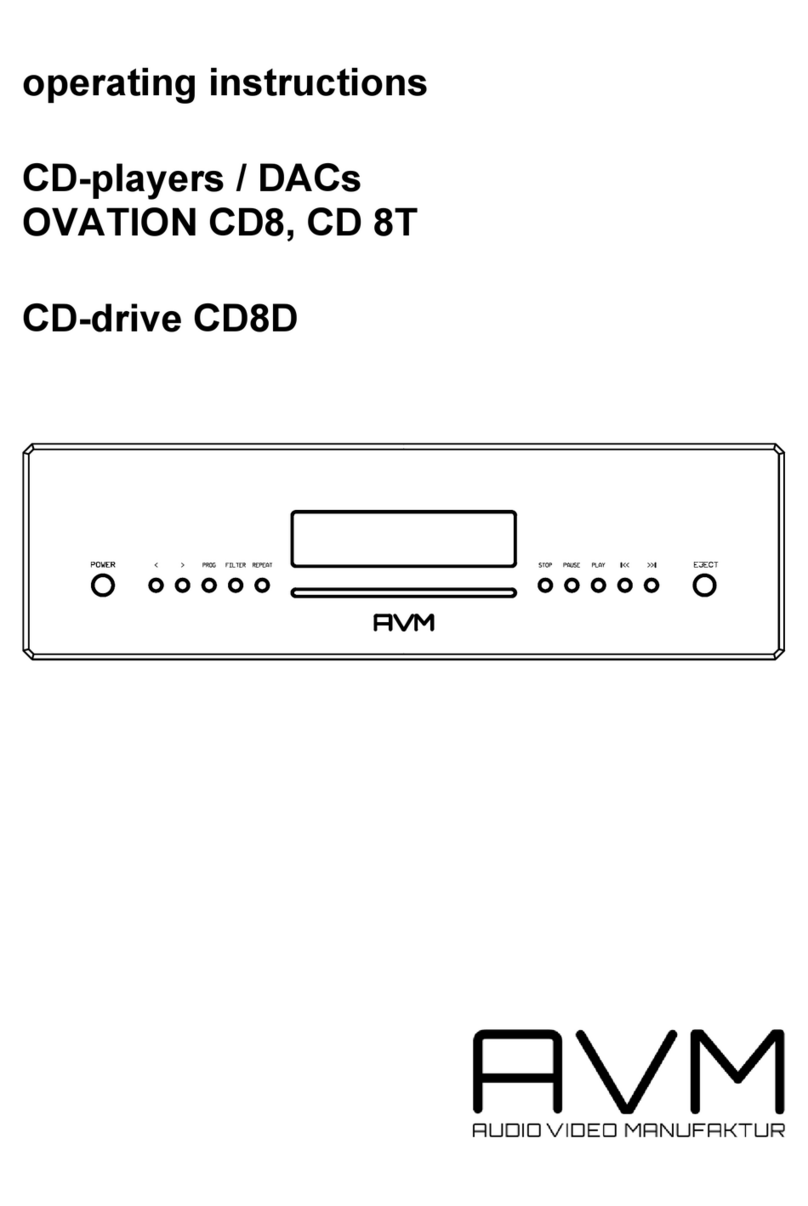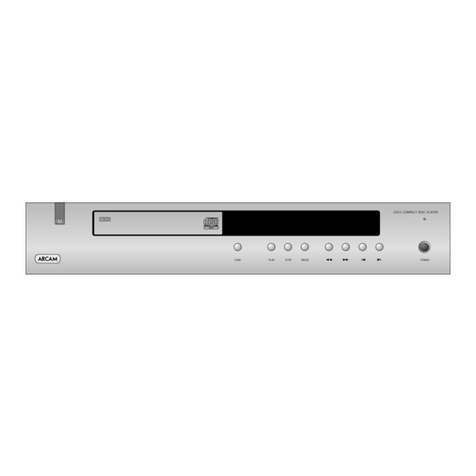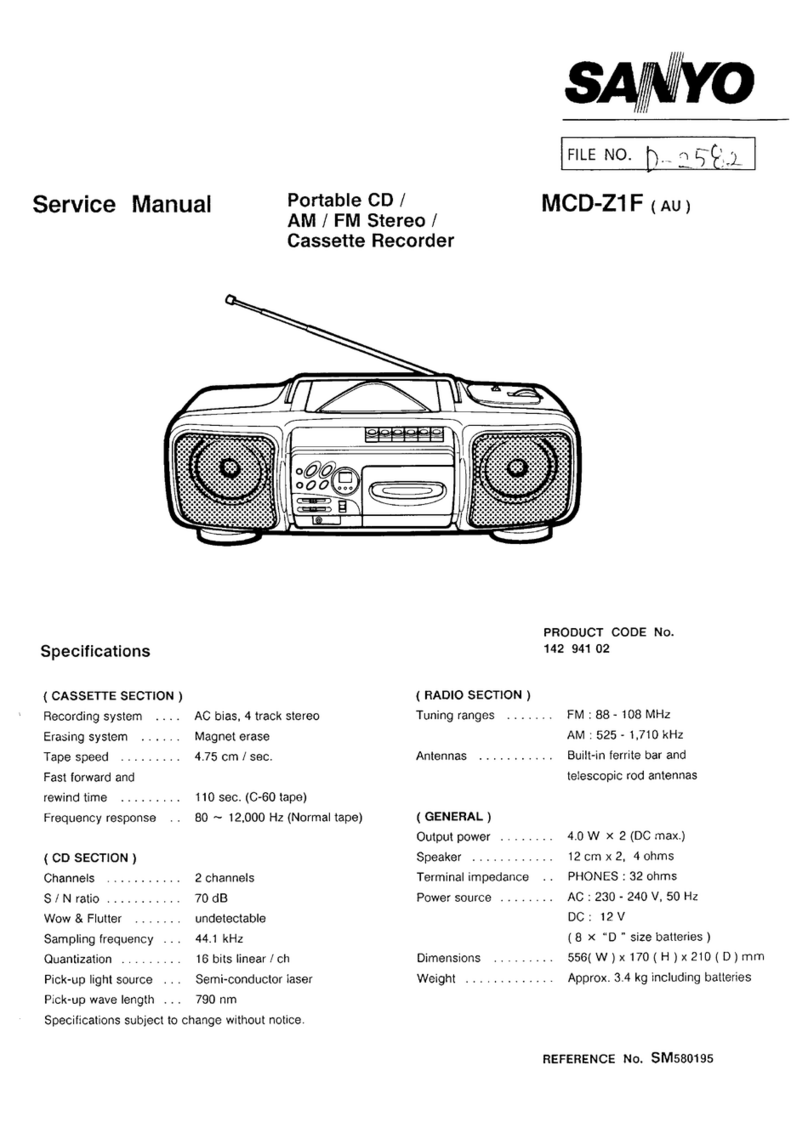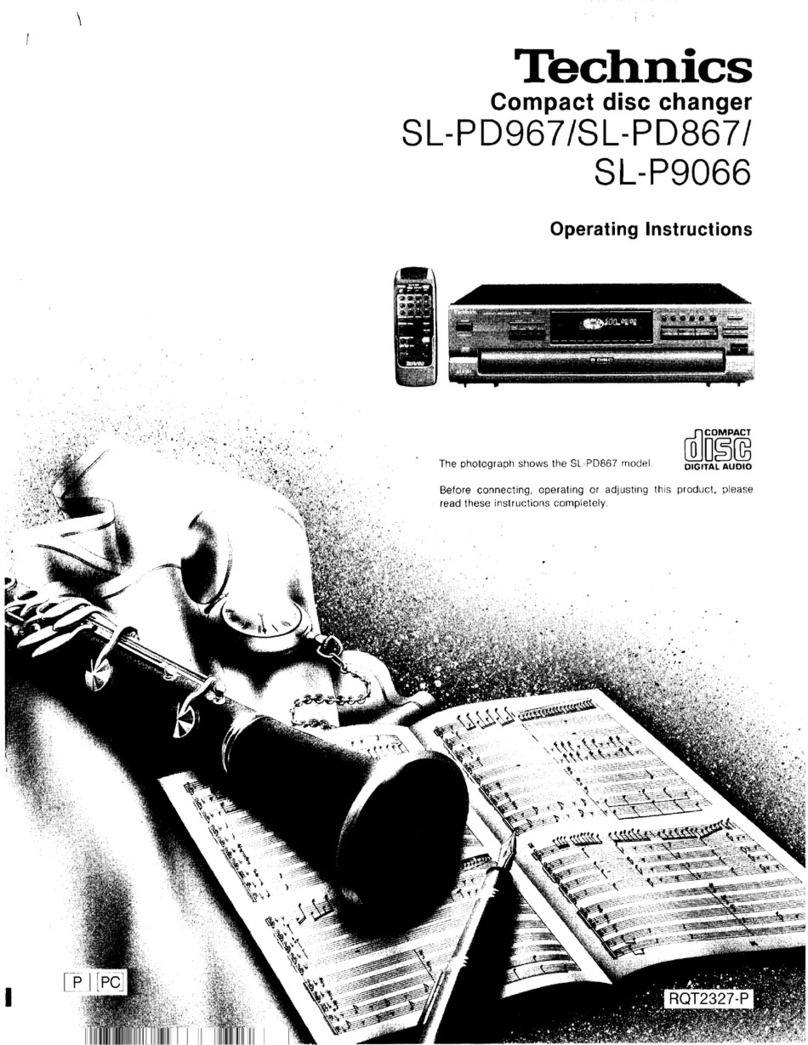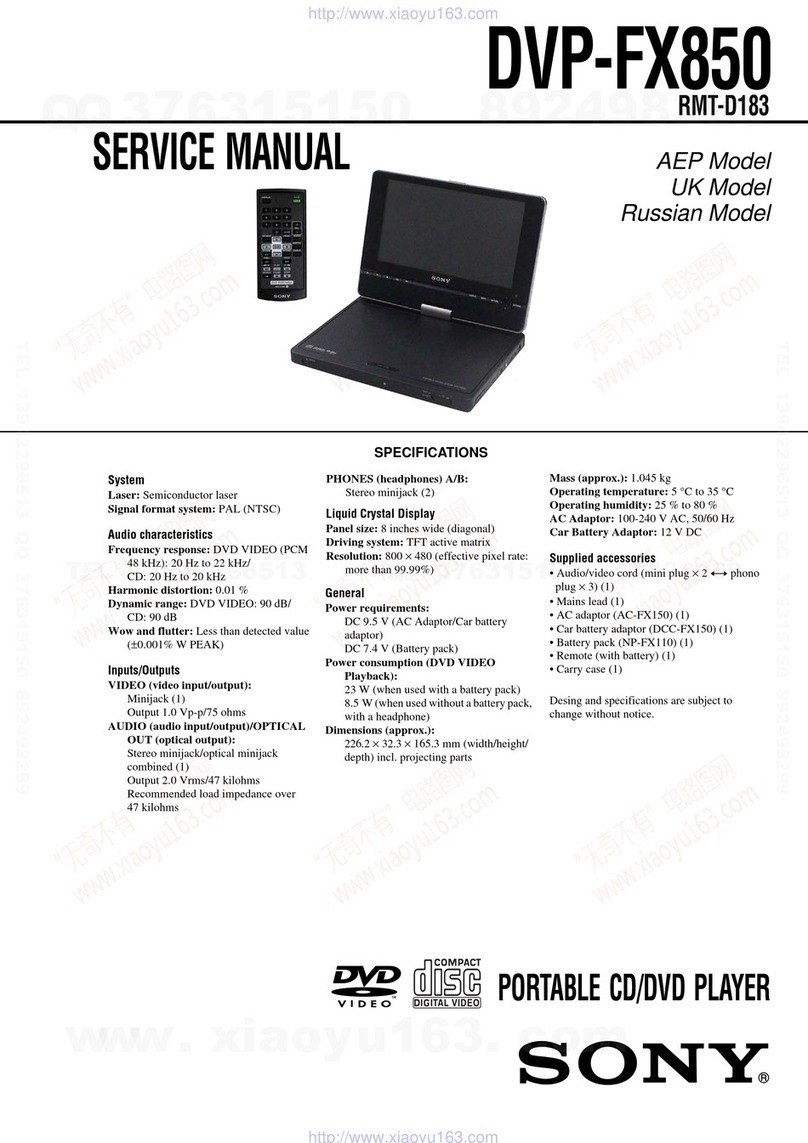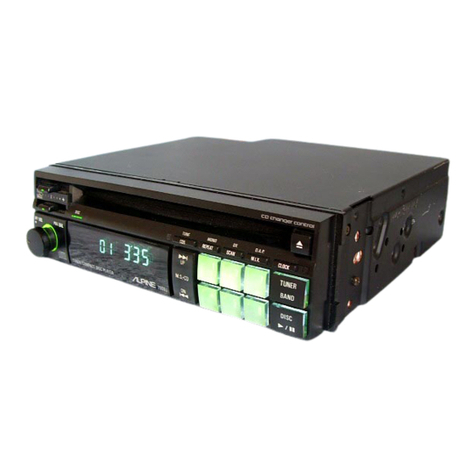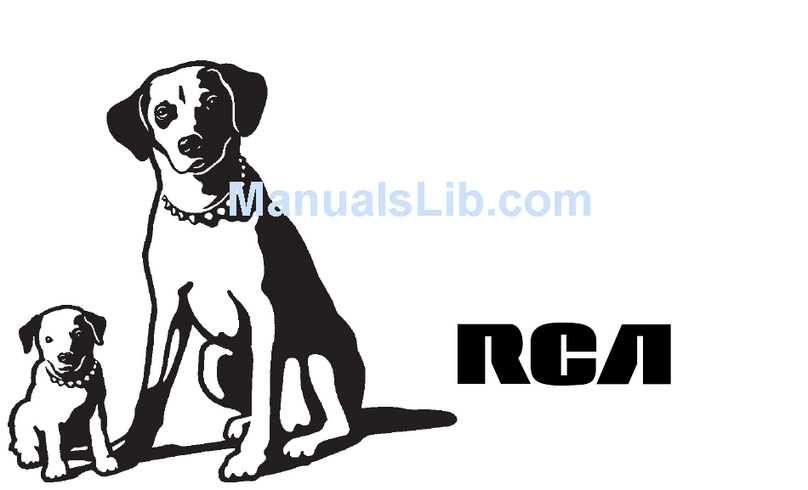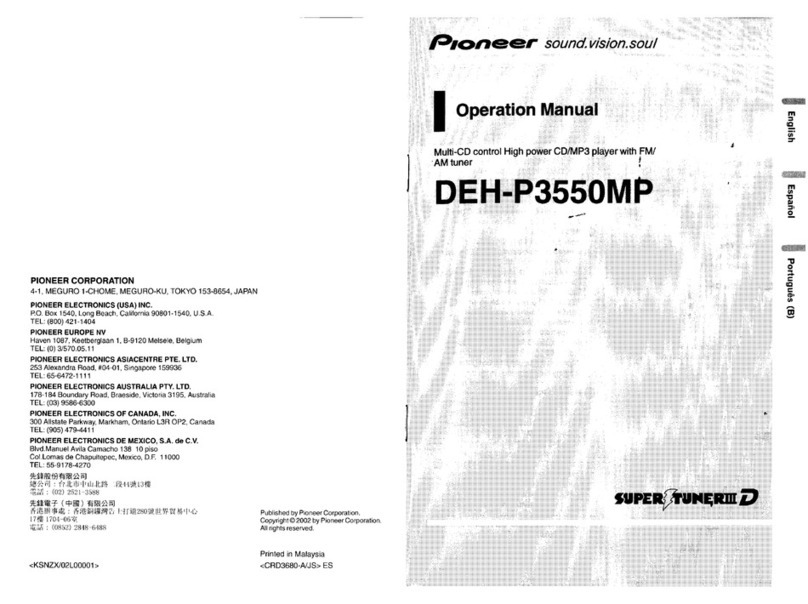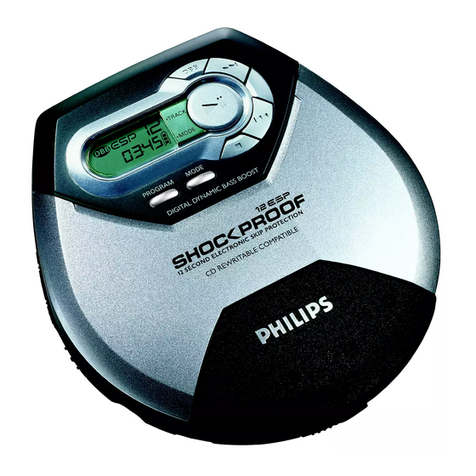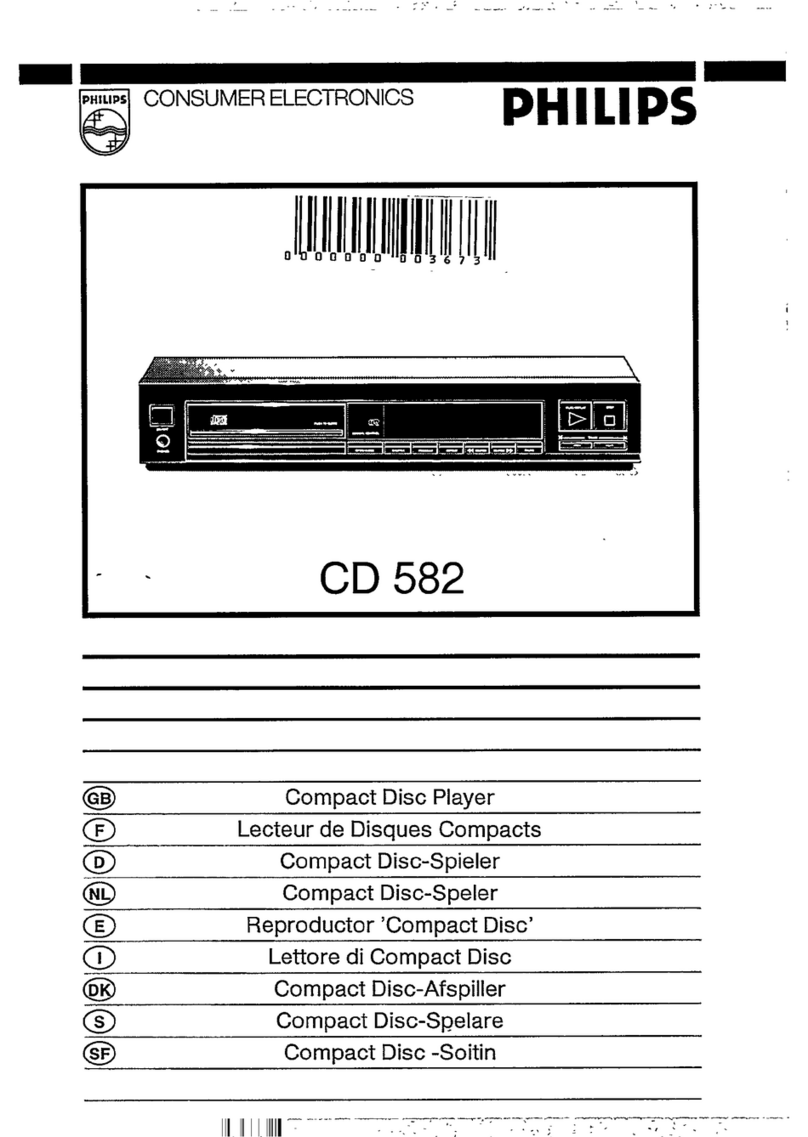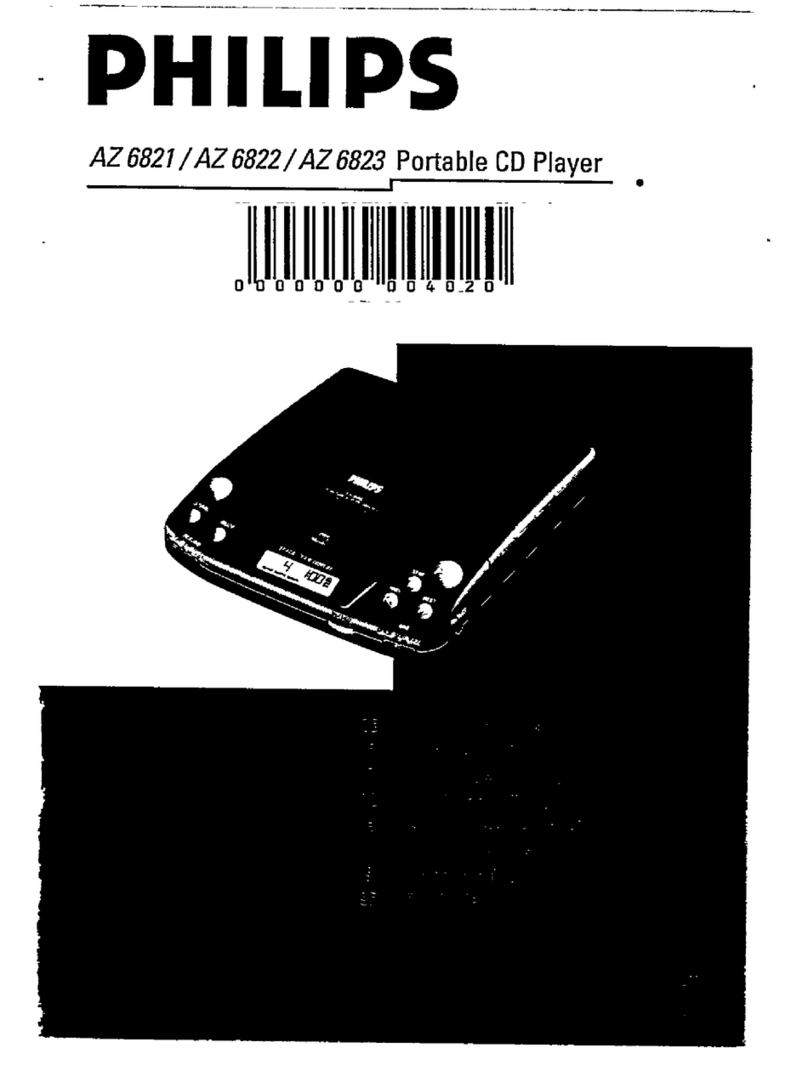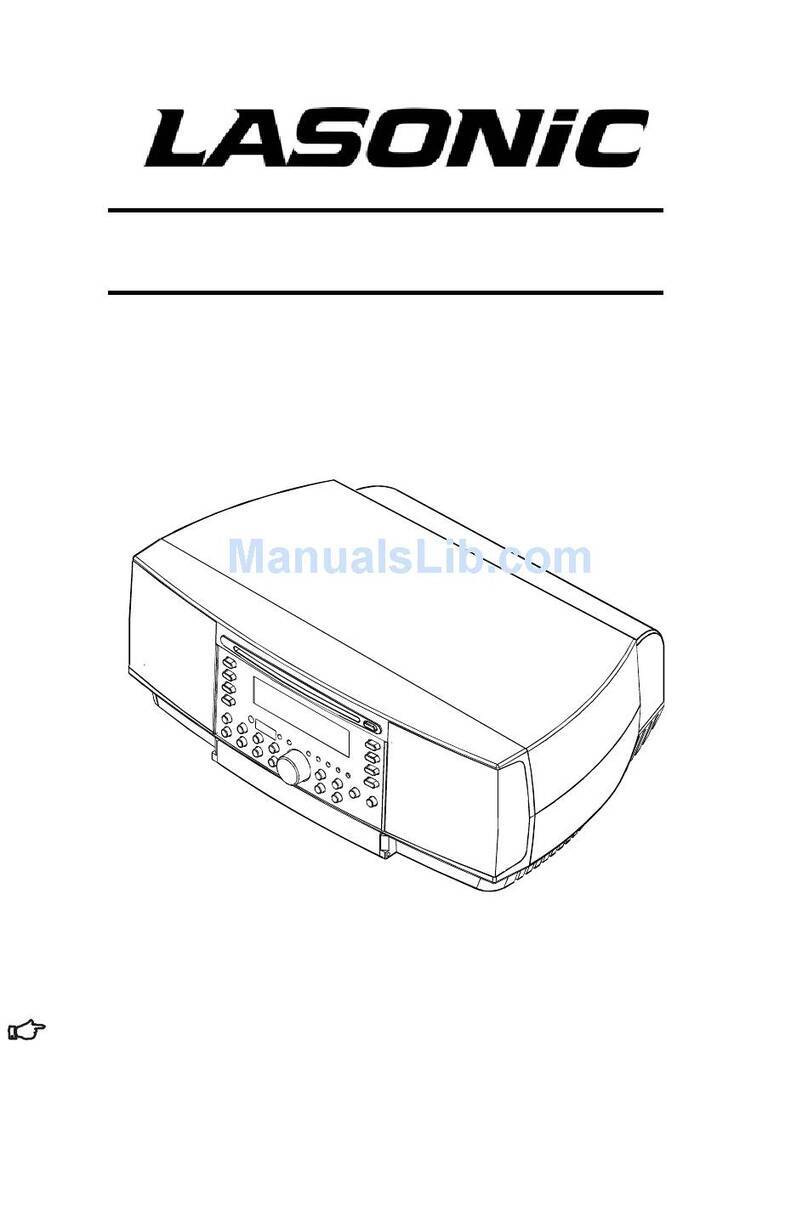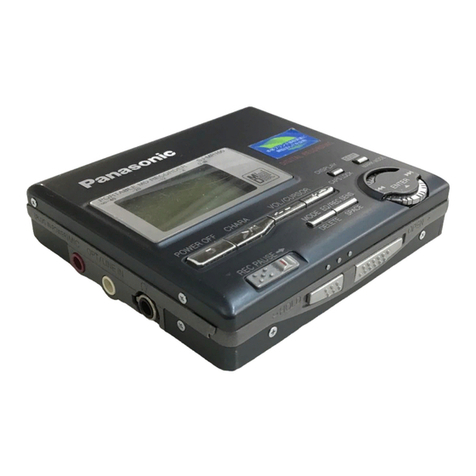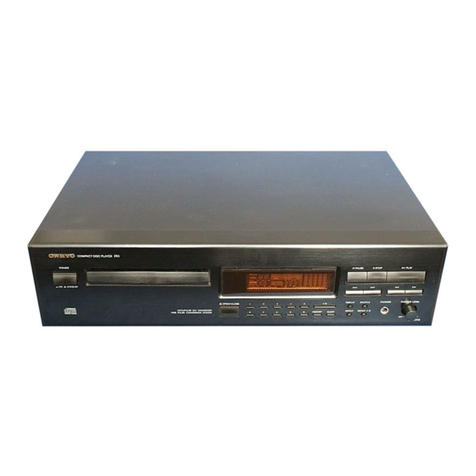5
The difference is that the noise energy is spread over a much broader frequency band. So the part of noise
energy which is within the audible spectrum decreases. You can imagine that like if You have a certain
volume of fluid in a small glass. If You fill the fluid in a glass which has much more diameter the quantity of
fluid doesn’t change but the level will be lower than in the small glass. In the same way the increasing of
sampling frequency (called upsampling) broadens the noise bandwith and reduces the noise level. Most of
the noise energy now is located in a frequency region beyond the audible range and can easily be filtered
out without affecting the music signal.
1.4.2 Reduction of jitter
Jitter means slight, varying deviations in the sampling frequency of a digital signal. These deviations come
from deviations in speed of the CD when it is played back (a natural effect, which can be reduced by
mechanical means, but never fully eliminated). They can additionally come from electronic circuits through
which the signal must pass. When such a signal is converted to analogue the samples arrive sometimes a
little bit too early, sometimes a little bit too late at the DAC. This leads to modulations in the analogue signal
which can affect the quality of the reproduced music. The spatial image is not precise, You cannot exactly
locate the instruments, the sound is a bit roughened.
The solution for this problem is upsampling. Upsampling does not only mean multiplying of sampling
frequency by a fixed factor like it is done by the oversampling technique used in former times. Upsampling
technique is more similar to recording the original digital signal anew with a different sampling frequency (re-
clocking). That means that the sampling frequency of the original signal and the upsampled signal are fully
independent of each other. Thus if the upsampling converter has a stable jitter free clock the upsampled
signal contains less jitter than the original digital signal.
The musical advantages of re-clocking are the second reason why the AVM CD3NG is equipped with a
brandnew upsampling circuitry and an additional stable oscillator circuit.
1.4.3 Filtering
If a digital signal is converted to analogue the analogue signal contains not only the original signal, but as
well it’s mirror image which lies in the frequency domain beyond one half of the sampling frequency. This
mirror image (aliasing) can cause unwanted interferences with the original signal and thus must be filtered
out before passing the signal to the amplifier.
If the original sampling rate of 44,1 kHz is used the filter slope must be positioned somewhat above 20 kHz
and has to be very sharp in order to let the audio signal pass and to eliminate the aliasing components. Such
filters cause a large phase deviation at the end of the pass band and have often also amplitude deviations.
This leads to a harsh reproduction of music and can also affect the localization of solo instruments and
voices.
Upsampling to higher rates makes it possible to set the filter frequency far out of the audio signal range. For
example at 192 kHz sampling rate the filter must take effect at 96 kHz. In this frequency region no music
signal is present. Thus the filter can theoretically not affect musical reproduction.
Anyhow the filter frequency and the gradient of the slope – even if out of normal audio range have some
subtle, but audible influence on the musical reproduction. Therefore the CD3NG offers You five different filter
characteristics. So You can choose Your favorite filter upon Your own taste.
1.4.4 Digital- / analogue conversion
The CD3NG uses highly precise 24-bit converters to reproduce the analogue signal out of the digital data.
The converters output balanced signals. These signals are fed into a differential amplifier. The difference
between the signals is twice the audio signal (because one of the signals is inverted) and the difference of
the inaccuracies of the converters. As the two converters per channel are on the same chip, their inaccuracy
is nearly the same and thus also nearly eliminated by the differential amplifier.
The second advantage of this differential technique is that the (very low) individual noise coming from the
converters is reduced by 3 dBs.
The result is a clearly audible advantage in dynamic of the music signal and an audibly improved
reproduction of the finest details.
